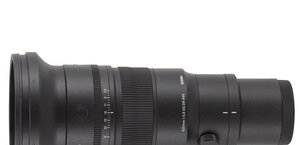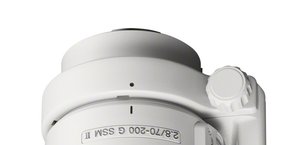Sigma C 18-50 mm f/2.8 DC DN – first impressions and sample images
3. Autofocus and some remarks concerning optical properties
Well, Sigma is not able to do so at practically any focal length – it's enough to glance at photos below to get the proof. It would be foolish to expect any other performance, taking into account the fact that the Sigma is a small and shapely lens. Now this topic can officially be closed.
 |
Please Support UsIf you enjoy our reviews and articles, and you want us to continue our work please, support our website by donating through PayPal. The funds are going to be used for paying our editorial team, renting servers, and equipping our testing studio; only that way we will be able to continue providing you interesting content for free. |
- - - - - - - - - - - - - - - - - - - - - - - - - - - - - - - - - - - - - - - - - - - - - - - -
Distortion is another aberration which correction is given up in case of C series instruments and in this case the tactics of Sigma remains the same. At the widest angle you get barrel deformations exceeding a level of -5% and at the 50 mm focal length you see its pincushion variant reaching almost +3%.
I have no intention to criticize the Sigma harshly for these results because such a performance is in full accordance with the idea behind the Contemporary series. The Sigma C lenses are supposed to be small, shapely, optically good, and moderately priced. These are main priorities; you have to pay for them with weaker distortion and vignetting correction – after all camera software, or your computer software, might deal effectively with these aberrations later.
We handled the pre-production lens specimen for just a very short period of time and, with the weather being ratther poor, we didn't have an opportunity to take pleasant sample shots. We also couldn't check how the lens would perform against bright light.
The autofocus of the Sigma C 18-50 mm combined with the Sony A7R IV and the Sony A7R III cameras, is completely noiseless and quite quick. We didn't find any distinct differences between performance of the lens, attached to any of these two bodies. Running through its distance range and confirming the right position takes about 0.4-0.6 of a second and it seems the autofocus is a tad faster at the shorter end of the focal spectrum despite a wider distance range.






